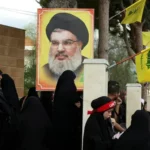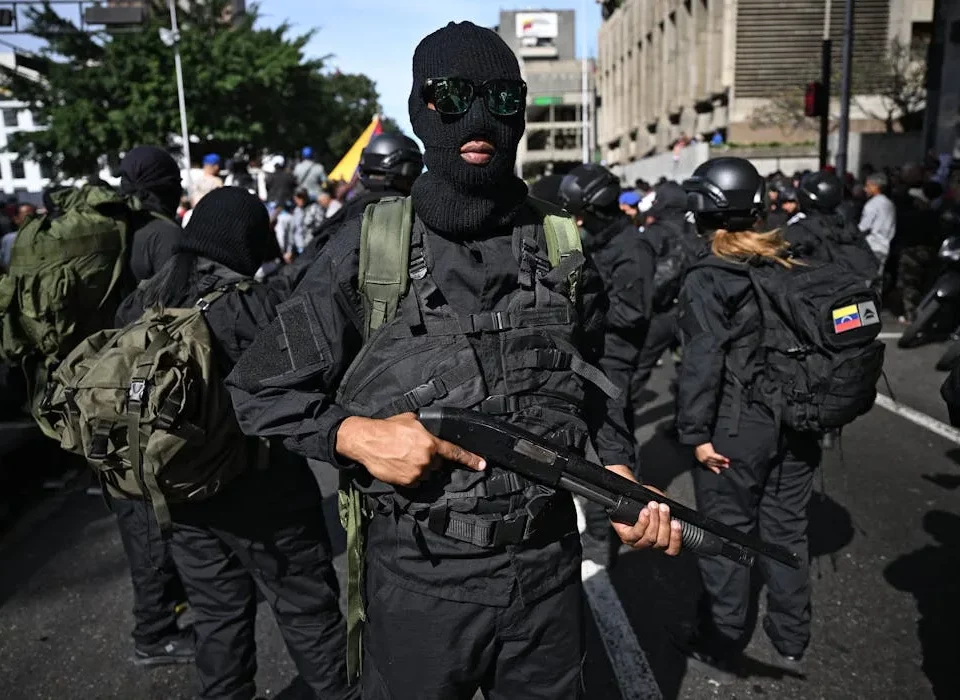
What happened today 28/9/2024
29 Settembre 2024
Per chi naviga la campana
29 Settembre 2024One year after Azerbaijan’s militarized takeover of the area, Nagorno-Karabakh remains scarred by violence and loss. As peace efforts stall, our reporter uncovers personal stories that reveal the deep wounds of this enduring conflict.
As the news broke, Lala began calling hospitals near the front lines to see if her sister Gayane was among the casualties that were being treated. “There was a live map of the war, so when we checked we saw [that the area where Gayane was deployed had been taken over]. We understood she was [dead], so the next step was to find her,” Lala says from a coffee shop in Yerevan, Armenia’s capital.
Lala spent the next couple of days looking for her missing sister in Azeri Telegram channels. She knew that, in this war, it had become common to be brutally mistreated, with videos of such acts posted online. “It is sad to say but that was the advantage we had to search for her,” she says. “Because she was a woman, we were sure they would post a video.”
Indeed, on September 15, 2020, Lala’s worst nightmares became a horrifying reality. She saw a video showing her sister’s lifeless body, stripped and mutilated, with her skin slashed and her face defiled. In a final act of cruelty, her mouth had been stuffed with her own finger. It is believed Gayane was killed by an Azeri air strike before her body was desecrated.
Jacobin has reviewed the video and photo of Gayane that were posted on Azerbaijani Telegram channels. Due to the extreme brutality of the images, we have chosen not to share them.
“I could’ve never imagined human beings could do that to another person,” Lala says. It took two months for Azerbaijan to return Gayane’s remains to Armenia, as part of one of the many exchanges of deceased soldiersbetween the two countries. “Maybe by sharing this story, they will stop hating us,” Lala reflects.
A Vicious Cycle
These skirmishes were part of a broader Azerbaijani offensive that began in 2020 to reclaim Nagorno-Karabakh, a region with a 95 percent Armenian population situated within Azerbaijan’s internationally recognized borders. Both nations have long-standing historical claims to the territory, which were largely suppressed during Soviet rule. However, as the Soviet Union approached its collapse in the late 1980s and new borders loomed, the centuries-old dispute reignited into a full-scale war.
“In the 1990s, Armenia’s military was very strong and successfully overcame the Azerbaijani army,” says Marylia Hushcha, a researcher at the International Institute for Peace. Armenia’s victory resulted in the creation of the self-proclaimed Republic of Artsakh, a breakaway region closely aligned with the Armenian government, located in Nagorno-Karabakh and surrounding areas, that has been predominantly populated by Azerbaijanis. The war left over 30,000 dead on both sides and displaced more than 500,000 Azeris — about 8 percent of its population — who fled to mainland Azerbaijan.
A 1994 Human Rights Watch report documented widespread violations of the laws of war, most of them committed by Armenian and Karabakh-Armenian forces. These violations included the deliberate and indiscriminate targeting of civilian areas, forced displacement, hostage-taking, looting, rape, and the burning of civilian homes. The report also pointed to instances of executing prisoners of war, highlighting the severe breaches of international humanitarian law during the conflict.
“The stories of displaced Azeris fed government propaganda,” continues Hushcha. “There are a lot of hate stories about what Armenians did to Azerbaijanis. They are not unfounded, but they were used by the government as a mantra for over thirty years.”
It took Azerbaijan nearly thirty years to rebuild its military strength, fueled by oil and gas wealth, and go back on the offensive. Hushcha believes this is driven by a desire for retribution: “What Armenia did to Azerbaijan thirty years ago, now Azeris are doing the same to Armenians.”
As these historical tensions resurfaced, the opening salvoes of the forty-four-day war broke out on the morning of September 27, 2020. Annahit Gevorgyan, a thirty-four-year-old mother of four, was at home in Martuni, Nagorno-Karabakh, with her children when the first air strikes hit. While she takes a break in her newly opened bakery on the outskirts of Yerevan, she recalls, “The airstrikes sounded very close — much closer than on other occasions.’’ Her husband Igor, forty-one, had just returned from work, and seeing drones overhead on his way home, quickly urged the family to take refuge in a bomb shelter beneath a bank in the city center.
While driving with other civilians, a nearby explosion rocked their vehicle.
My daughter, Victoria, wanted to look at the sky to see the drones, and all of a sudden, I felt something falling. We all lost consciousness for a few minutes, when I woke up there was a white cloud and I could not hear anything [because of the blast]. I saw they had dropped a bomb in the house next to us — we were all injured and I realized my daughter was not breathing.
Igor, who was transporting civilians to the shelter on a bus, arrived at the scene to find devastation. Together with the help of others, he carefully lifted the wounded — including Annahit and their three-year-old son, Artsuik — onto the bus. Eight-year-old Victoria and a neighbor were already dead. Igor rushed the injured to the hospital, where doctors worked to save his wife and son, who had both been critically wounded. There, doctors recommended amputating Artsuik’s arm and part of his leg due to shrapnel injuries.
Igor dismissed the doctor’s advice and took his wounded family to Yerevan, where his son remained hospitalized for a month, undergoing twelve surgeries to remove shrapnel. To this day, due to the numerous surgeries, his head is slightly deformed, and doctors have been unable to remove all the shrapnel, as further surgery is too risky.
Crisis in Karabakh
Despite a Russian-brokered cease-fire between Armenia and Azerbaijan, it wasn’t long before Azerbaijan resumed its military offensive. Nearly two years after reclaiming many of the territories it had lost to Armenia in the 1990s, Azeri forces imposed a blockade on the Lachin corridor on December 12, 2022. This strip of land, the only connection between mainland Armenia and Nagorno-Karabakh, was vital for the movement of goods and people. Its closure effectively severed all physical ties between the regions, leaving some 120,000 Karabakh Armenians to fend for themselves, cut off from essential supplies of food and medicine.
Janetta, a sixty-six-year-old grandmother from Karabakh’s capital, Stepanakert (known as Khankendi in Azerbaijan) recalls the dire conditions: “We ran out of food and electricity, we didn’t have anything.” She says there were many times all the family had to go hungry. “We didn’t even have a piece of bread. We wanted the small kids to go to Armenia because we thought they could die but we didn’t have anywhere to go.”
Azerbaijani officials dismissed these claims, arguing that the checkpoint was necessary for security reasons and criticizing Ocampo’s report as containing “serious factual, legal and substantive errors” without providing specific counterarguments.
The blockade ended abruptly on September 19, 2023, when Azerbaijan launched a new assault on Nagorno-Karabakh, forcing nearly all 120,000 Karabakh Armenians living in the territory to flee to Armenia. Karine Aghatelyan, a sixty-three-year-old grandmother from Berkadzor was at home chatting with relatives the day the offensive began. One of her grandchildren came home early from school and reported that the Azeri military had begun shelling Nagorno-Karabakh.
“That moment the bombing started next to our village. My grandson shouted that he was afraid that Turks [i.e., Azeris] were coming,” Aghatelyan says from her family home in Yerevan. As her village rushed to a bomb shelter, Aghatelyan stayed home, waiting for her other grandchild to get back from school. Once they were in the car heading to the shelter, an artillery barrage struck nearby, sending shards and debris flying. Aghatelyan and her grandson, Yura, were among the most severely wounded. Most villagers had already reached the bomb shelter at the time of the attack.
Eventually, ambulances arrived to evacuate Aghatelyan and her family. Due to the severity of her injuries, she was airlifted by Russian peacekeepers to Yerevan, where she and Yura had to undergo several surgeries to remove shrapnel. “Azerbaijanis are aggressors, they are like beasts, we do not know why they targeted us . . . there were no Armenian soldiers in the village, only civilians,” she says.
Breaking the Cycle of Violence
A year after the latest military campaign ended, Armenia and Azerbaijan are profoundly divided. One side bears the unbearable weight of mass displacement and the trauma of genocide, while the other revels in a newfound sense of redemption and triumph.
In an effort to break the cycle of violence, the Armenian government has been negotiating a peace deal with Azerbaijan’s president, Ilham Aliyev. To facilitate this, the Armenian government has made significant concessions: it withdrew its bid to host COP 29 in favor of Baku, has refrained from discussing military retaliation, and surrendered four Azeri villages it captured in the 1990s.
Hushcha notes that many Armenians are unhappy with Prime Minister Nikol Pashinyan, feeling he is neglecting historical grievances in his attempts to compromise with Turkey and Azerbaijan. “All the people who have lost their homes and family members during the war have a hard time accepting those things,” says Hushcha. “Justice is not on top of the agenda in these peace negotiations.”
In 2021, the Armenian government filed a case against Azerbaijan at the International Court of Justice (ICJ), the UN’s main court for resolving disputes between countries, accusing Azerbaijan of state-sponsored racial discriminationagainst Armenians. Separately, Center for Truth and Justice (CFTJ), a US-Armenian NGO documenting war crimes since 2020, filed a case at the ICC last April, urging the court’s prosecutor, Karim Khan, to charge Aliyev and other high-ranking officials with genocide.
However, significant obstacles complicate efforts to achieve accountability through these courts. The Armenian government may withdraw its case at the ICJ if it views this as necessary for a peace deal with Azerbaijan. Furthermore, Azerbaijan’s refusal to join the ICC limits the court’s jurisdiction. Since Nagorno-Karabakh is internationally recognized as part of Azerbaijan, the ICC could face challenges investigating alleged war crimes in the region. This uncertainty casts doubt on whether justice will be served for the victims of the conflict.
Gassia Apkarian, one of the founding members of CFTJ has concerns about the Armenian government dropping its bid for justice in international courts to reach a peace deal with Azerbaijan. “The mantra that we keep repeating is that we cannot have sustainable peace unless you pursue justice simultaneously,” Apkarian says. “The issue we have had since the Armenian genocide in 1915, and all subsequent atrocities, is that if you don’t hold people responsible, atrocities return with impunity. That’s why accountability is key to peace.”
Jacobin reached out to the ministries of foreign affairs of Armenia and Azerbaijan for their perspectives on the peace process but received no responses by the time of publication.
“The guns are going to fall quiet and the skies are going to clear up of bombs and drones when there is an honest peace agreement and there’s intense work in healing both countries,” Apkarian says. “Organizations like ours must exist to talk the truth and defend the truth, on both sides.”





